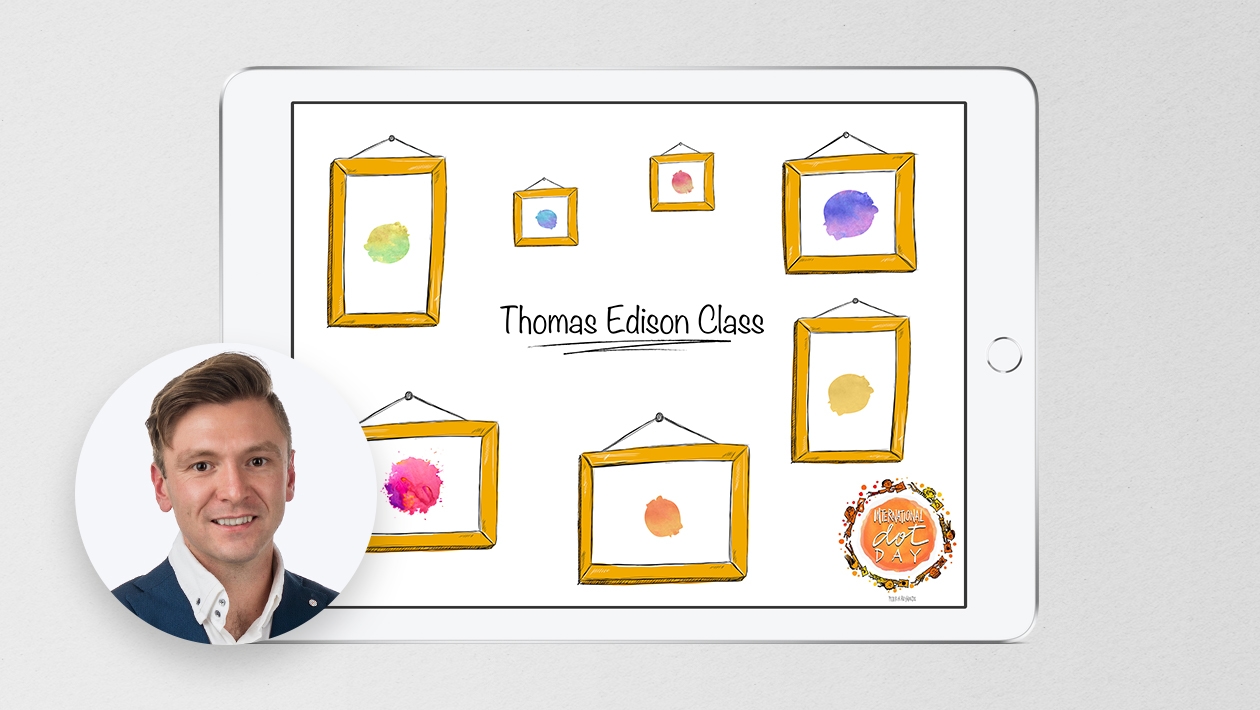Pop Art graphic of philosopher and author Thomas Paine and his work The American Crisis No. 1, 1776, Library of Congress. Created in Keynote.
Introduction
Most high schoolers might be familiar with the term "influencers" as used today in social media, political campaigns and marketing. During the time of the American Revolution in 1776 “influencers” also used rhetoric to convince and persuade. Connecting and analyzing the past rhetoric with today, teaches not only content but also media literacy. Approaching this topic guided by the Challenge Based Learning framework adds a digital component that engages as well as involves students in the process of learning.
Idea for Connecting History Content to Challenge Based Learning
Engage
Introduce the 🌎 Big Idea of Political Rhetoric. Spark a introductory discussion of the topic with a primary source graphic, Clips or Keynote Presentation to generate interest around the Big Idea.
With students, formulate an 🔎 Essential Question. Use Freeform as a brainstorm platform for gathering ideas. An Essential Question might be something like:
How can we grow media literacy skills by comparing the rhetorical techniques that Thomas Paine use in 1776 to techniques used by political and social influencers today?
Next students determine a community/class 🏔️ Challenge where students will be involved in creating a project that answers their essential question.
Develop a media literacy guidebook for peers that outlines and identifies the rhetorical techniques used historically and those used by influencers in the modern media landscape.
Investigate
Students formulate 🧭 Guiding Questions for investigation.
Brainstorm questions for research. Examples - What are rhetorical techniques? What techniques are found in American Crisis and other pamphlets at the time of the American Revolution? What rhetorical techniques are used by influencers today?
Students create 🎒Activities and Resources to answer to their questions.
- Suggestions:
- Research using Safari and Notes
- Interview and record using, Voice Memos or GarageBand, local political office holders or candidates and campaigns on rhetorical techniques.
- Import historic and current pamphlets/articles/speeches into Pages or as PDFs and identify, highlight, and define emotional appeals, logical arguments, credibility building, rhetorical questions, repetition, and anecdotes used by Paine or other historic figures and those used today.
- Investigate modern political and social influencers. Examine how they utilize similar rhetorical techniques to engage with their audience and persuade public opinion. Consider social media posts, speeches, and campaigns.
- Demonstrate how these techniques are used by designing posters, producing a podcast, writing a series of social media posts, or filming a short video on a local topic.
✏️ Synthesis
Students synthesize their information by creating an infographic that visually demonstrates the results of their investigations.
Act
📍Solution. Using Pages, students create a guide book for their peers. They provide tips on recognizing influencer techniques and how to check for verification using media literacy standards.
🥾Implementation. Students distribute guide book to teachers, parents and peers for feedback.
🗒️ Evaluation. Students go over feedback and evaluate their product. They journal in Notes or Pages about what they learned about the power of rhetoric in influencing public opinion. Then they make changes to their guide based on feedback as needed.
For more ideas see
And contribute additional ideas or suggestions below. Thanks!










Attach up to 5 files which will be available for other members to download.